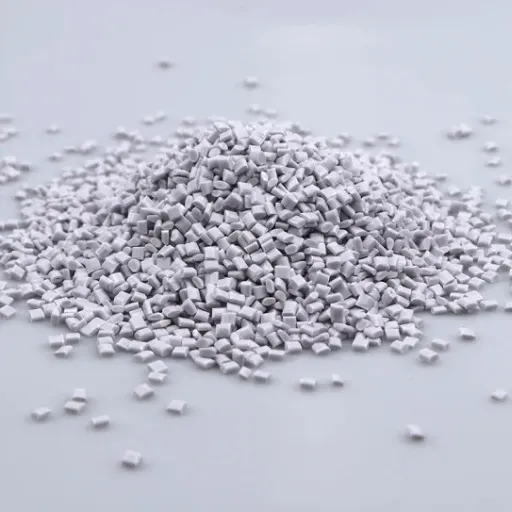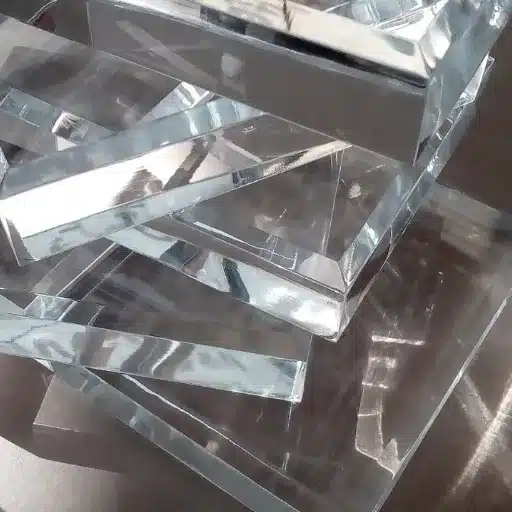Polyphenylene sulfide (PPS) is one of the high-performance thermoplastics with unrivaled properties, making it a standout material. PPS plastic’s resistance to heat and chemicals, as well as its mechanical strength, has garnered the plastic high praise in industries like automotive, aerospace, electrical, and industrial applications. This guide explores the depth of the world of PPS plastic by explaining its properties, key advantages, and broad range of applications. This plastic is critical to modern manufacturing and intricate polymer designs. Thus, irrespective if you are a material engineer, a product designer, or an advanced polymers enthusiast, this post will prepare you with everything essential about PPS. Prepare to learn about how this remarkable material is driving innovation in different industries.
What is PPS plastic?
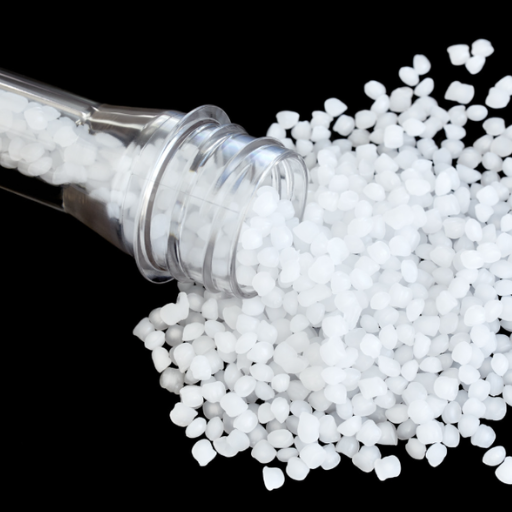
Polyphenylene Sulfide PPS is a type of thermoplastic polymer with remarkable mechanical strength, heat resistance, and chemical immunity. It is extensively employed in high-temperature and harsh environment applications such as automotive parts, electrical appliances, and industrial machinery. PPS has a superb strength-to-weight ratio in addition to being lightweight, making it an ideal engineering and manufacturing material. Furthermore, PPS is abrasion-resistant and durable.
Definition and Overview of Polyphenylene Sulfide
The diverse applications of polyphenylene sulfide (PPS), as a high-performance material, stem from its unique properties. Its chemical structure and ability to resist severe stress makes it a great candidate for extreme environments. It can withstand service temperatures up to 200 degrees celsius and has a melting point of 280 degrees celcius. Moreover, it inherits good corrosion resistance to acids, organic solvents, alkalis, and a variety of harsh chemicals.
PPS also demonstrates great mechanical properties by possessing a tensile strength of 80 to 100 MPa and a flexural modulus of around 6 to 10 GPa, depending on its grade and formulation. Its low moisture absorption of less than 0.02% guarantees no warping or gaining of dimension, thus providing superior stability for critical applications. It is also flame retarded, fully complying with UL94 V-0 standards.
Another highlight of PPS is its high wear and abrasion resistance, particularly when reinforced with glass fibers or filled with PTFE. These augmentations also improve the material’s endurance against mechanical stress and increase its longevity in use as parts of pumps, gears, and bearings. These factors combined make PPS one of the most sought-after materials in the automotive and aerospace industries as well as in electronics, because of its ability to withstand harsh operational environments.
Key Characteristics of PPS Plastic
Polyphenylene sulfide (PPS) is leading the way among high-performance engineering plastics due to its remarkable characteristics, which makes it particularly advantageous for tough uses. One of its principal attributes is the thermal traits, as PPS does not deteriorate significantly when operated under consistent temperatures of around 200°C (392°F) PPS can stand upto 200°C (392°F). This strength enables it to perform in hot environments with reliability.
Furthermore, PPS has unmatched resistance to chemicals, being virtually unaffected by most solvents, acids, and bases. This resilience broadens its proportionate service life in Noxious environments like chemical processing equipment. In addition to bearing chemical erosion, the material also provides considerable bodily stiffness, which is low thermal expansion, which is important to maintaining. However, it also delivers excellent
PPS is lightweight because of the lower moisture absorption and is therefore superior at electrical insulation when wet. Its dielectric strength is known to remain stable between 16 – 30 kV/mm which proves to be a great asset for electronic appliances where balance is crucial.
The addition of fiberglass fillers greatly increases PPS’s mechanical properties, enabling sophisticated composites to reach tensile strengths of over 180 MPa based on their composition. Furthermore, the polysulfone polymer’s natural resistance to wear and friction makes it a leading candidate for the production of long-lasting, efficient components, including pumps, valves, and impellers in the automotive and industrial fields.
Changes in PPS processing techniques, like injection molding, have created opportunities for precision PPS applications on complex 3D shapes. The dependence of modern industries on super-reliable parts and materials, accompanied by the ability of polymers to hold tolerances very tightly, makes them complementary to new technological developments.
Comparison with Other Plastics
PPS, when compared to its other high-performance counterparts, is notable because of its unrivaled thermal stability, chemical resistance, and mechanical strength. Take for instance Polyamide (PA), a type of Nylon, which does provide elasticity alongside a decent level of abrasion resistance. However, it completely falls short in comparison to PPS when it comes to dimensional stability and high temperature tolerance. PPS can endure continuous operation at temperatures ranging from 200–240°C.
Another example of high-end engineering plastic is polyetheretherketone (PEEK). While PEEK offers a comparable level of heat resistance to PPS, its much higher price tag makes PPS the go-to option for moderate to high thermal applications. In addition, PPS rivals polycarbonate (PC) in rigidity and chemical resistance, outperforming PC and making PPS the better choice for harsh environments, such as chemical processing plants.
Also, PPS is well known for having unmatched wear and fatigue resistance in comparison to other plastics such as polyoxymethylene (POM), under long-term mechanical demands. In addition, due to its ability to flame retard without the aid of additives, it falls into a niche category of industries such as electronics and automotive that battel for large demand and strict safety standards.
PPS, when taking into account performance, durability, and cost-efficiency, becomes an unmatched option for several applications, leading with engineering plastics.
What are the properties of polyphenylene sulfide?

Known for Polyphenylene sulfide (PPS) are the following key properties
- High thermal stability: Elevated temperature PPS can withstand temperatures without losing its structural integrity.
- Chemical resistance: Unlike other compounds like acids, alkalis, and even some solvents, it does not change its chemical composition.
- Mechanical strength: Even in most challenging conditions, PPS offers exceptional strength and rigidity.
- Dimensional stability: PPS retains shape and volume even when exposed to moisture and fluctuating temperatures over long periods of time.
- Flame retardance: Even without additional additives, PPS is inherently flame resistant.
- Electrical insulation: Because of its excellent insulating properties, it can be used in electronics.
These traits make PPS highly useful in the automotive, electronic, and aerospace industries.
Mechanical properties of PPS
Polyphenylene sulfide is praised for being exceptionally tough and reliable for complicated tasks, thanks to its implausible mechanical properties. Its critical traits regarding mechanics are elaborated further:
- Tensile Strength: Depending on specific grade and formulation, PPS tends to have significant tensile strength ranging between 80 and 100 MPa. This allows it to withstand enormous mechanical force without deforming.
- Flexural Strength: Sometimes, around 120 MPa and 160 MPa, the material exhibits remarkable flexural strength, allowing it to withstand stress while being bent or flexed.
- Modulus of Elasticity: With a high modulus of elasticity, PPS tends to average between 3 to 5 GPa, granting it exceptional rigidity and stability while in load-bearing use.
- Impact Resistance: There are other materials weaker than PPS; however, some of the primary strengths are that this material is known to have low resistance. The ability of the material to withstand impact can be enhanced by using fiber reinforcement, which improves the application of this material on a stronger bearing with sudden forces.
- Wear Resistance: High-performance PPS is particularly advantageous in components such as gears and bearings owing to its low coefficient of friction along with frictional wear and heat resistance, including at increased temperatures.
- Creep Resistance: The combination of high temperature and pressure does not impact the very low lasting shape change, or creep, occurring in materials PPS.
PPS is a superior option when strength, durability, and rigidity are required. The PPS’s mechanical properties make it useful in automotive transmission components, electronic connectors, and industrial machinery parts.
Thermal properties of PPS resin
The thermal properties of PPS resin are exceptionally high, making it greatly resistant to heat. It can withstand 200°C while retaining functionality, having a high melting point which retains excellent shape under high temperatures, and performing optimally in harsh conditions. The low rates of thermal expansion during aging PPS resin endures maintain reliability for demanding applications that involve high temperature.
Electrical properties of pps materials
Elektrik ve elektronik alanlarında pek çok yapıda kullanılmasına neden olan mükemmel elektrik özelliklerine sahip tanınmış PPS malzemeleri, işletim doğrultusunda yüksek voltaj altında bile güvenilir performans gösterirken, mükemmel yalıtım sağlaması ile düşük, enerji kaybı yaratan dielektrik sabiti ve kayıp faktörüne dayanan yüksek frekanslarda müthiş bir performans sergilemektedirler. Akıllı telefonların iç yapıları olan devre kartı, bağlantı elemanı gibi tesisatlarda ise pps ile yapılan the insulators kullanılması, daha da verimli hale gelmesini sağlar.
Ayrıca, hars operasyon alanları için elektriksel açılma ve izleme direnci pps reçinelerinde çok yüksek seviyede, pps malzemeleri zahmetli koşullarında bile 10 ^ 16 ohm·cm’yi aşarak hacim özdirenç, bunlara bağlı yüzey özdirenç seviyesinde tutarlı elektrik performansı sunmaktadır. Yüksek nemli veya sıcaklıkta zorlu koşullarda, paslandırmaya, alüminyum, otomotiv, hava taşıtları, tüketime oldukça zorlu dayanığ ihtiyaç duyulan bu eriyen pps yapısına tksc 450—1500 derece ile motpat ismi verilmektedir.
What are the different grades of PPS?
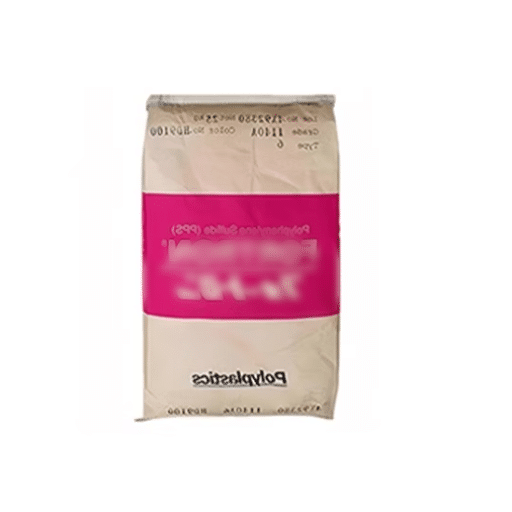
Polyphenylene sulfide (PPS) has multiple grades to accommodate distinct applications. The key grades include:
- Unfilled PPS: This is pure PPS material possessing unfilled grade with unfilled chemicals, meaning it has high chemical resistance and exceptional dimensional stability. It’s favorable for tasks demanding precision and cleanliness.
- Glass-Filled PPS: This grade offers greater thermal stability, strength, and stiffness due to being reinforced with glass fibers making it ideal for structural components.
- Mineral-Filled PPS: Improves wear resistance in many environments because of its mineral fillers, enhancing dimensional stability.
- Conductive PPS: This type adds precise fillers that enhance electrical conductivity, making it widely used in electronic components and for anti-static functions.
- Wear-Resistant PPS: Certain additives are used to minimize friction and wear, which are used for moving parts, especially bearings or gears.
Every classification aims to fulfill particular performance expectations within various sectors.
Types of PPS and their applications
Polyphenylene sulfide (PPS) comes in different grades, each designed for different applications because of its specific attributes. The following illustrates the types of PPS along with their uses:
- Unfilled PPS
-
-
- Description: Unfilled PPS is the simplest form of PPS; hence, it is free from all fillers and reinforcements. It provides outstanding chemical resistance as well as shape retention under deformation.
- Applications:
- Protective pumps and valves in chemical industries.
- Coatings that prevent corrosion.
-
Equipment involved in processing food.
-
- Glass-Fiber Reinforced PPS
-
-
- Description: Along with glass fibers, the reinforced PPS has improved strength and stiffness which makes it suitable for demanding structural applications.
- Applications:
- Parts and housings of automotive gears
- Enclosures for electronics and electrical appliances
- Components of industrial machinery
-
- Carbon-Fiber Reinforced PPS
-
-
- Description: Carbon fiber reinforced PPS has high, and in some cases unmatched, mechanical strength along with thermal conductivity, and it is extremely lightweight.
- Applications:
- Parts used in aerospace machinery
- Automotive aftermarket performance parts
-
Sports equipment like bicycles and tennis rackets
-
- Mineral-Filled PPS
-
-
- Description: The addition of mineral fillers improves dimensional stability as well as surface smoothness and increases the resistance to high temperatures.
- Applications:
- Precise industrial applications
- Temperature-resistant household devices
- Components requiring high heat resistance
-
- PPS with Lubricant Additives
-
-
- Description: The Wear resistance and friction of some PPS grades is improved by additives such as PTFE or molybdenum disulfide, making the grade tougher.
- Applications:
- Bushings and bearings
-
Gears and other sliding parts
-
Every grade of PPS has a distinct blend of properties, allowing it to serve further industry needs like automotive, aerospace, electronics, industrial manufacturing, and many others.
Applications requiring specific PPS grades
1. Automotive Industry
-
-
- High-Temperature Tolerance Grades:
- Used in manufacturing items positioned under the hood of vehicles like vehicle tank radiators, components of the fuel systems, and housings for turbochargers, where temperatures could go beyond 200 degrees C.
- Enhanced Mechanical Strength Grades:
- Best used for providing added strength for connectors, sensor housings, and even gears that are subjected to powerful vibrations as well as high load.
- High-Temperature Tolerance Grades:
-
2. Aerospace Industry
-
-
- Flame-Resistant Grades:
- Applied in designing parts of sleek boats I cabins such as, interfaces along with cables as well as main framework parts owing to certification of stringent restriction of smoke and fire as well as harmful materials encountered on these devices during flight.
- Lightweight Reinforced Grades:
-
Used in making brackets as well as panels, which influence the weight of aircraft as primary materials to be used, thus enabling high structural strength while improving the overall effectiveness and efficiency.
-
- Flame-Resistant Grades:
-
3. Electronics Industry
-
-
- Electrical Insulation Grades:
- Best suited as prefabricated connectors, sockets, and PCB components due to their dielectric stability and heat resistance.
- Low-Warp Grades:
- Superb for precision molded items like semiconductor packaging and fiber optic parts.
- Electrical Insulation Grades:
-
4. Industrial Manufacturing
-
-
- Chemical-Resistant Grades:
- Essential in industries where components are exposed to corrosive chemicals, such as the pump parts and filter housings.
- Wear-Resistant Grades:
-
Critical for gears and bearings, and sliding parts with minimal friction and long-lasting performance.
-
- Chemical-Resistant Grades:
-
Every one of these specialized PPS grades is customized for the demanding performance requirements of advanced applications while balancing strength, resistance, and endurance for capability in today’s sophisticated industries.
How is PPS manufactured?
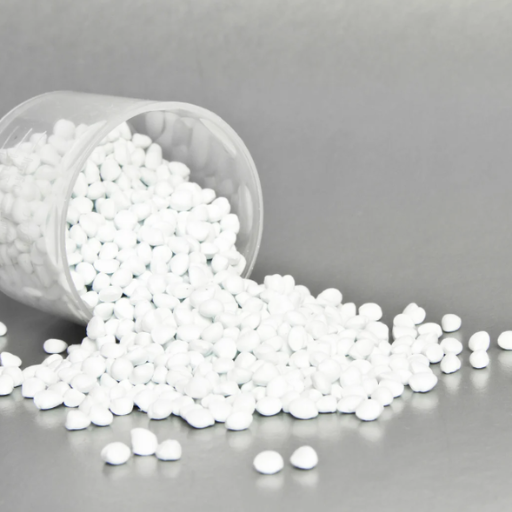
Polyphenylene sulfide (PPS) is produced from a polymerization process. It includes the step of reacting p-dichlorobenzene with sodium sulfide at high temperature to obtain PPS polymers. The reaction products are dried, melted, and subsequently extruded into pellets or fibers; these are then processed into other forms. This method guarantees that the PPS polymers have their thermal stability and chemical resistance.
Detailed Breakdown of PPS Production Processes
As with all engineering plastics, PPS exhibits a unique combination of properties, including elevated temperature resistance, low friction abrasiveness, non-toxicity, and excellent thermal and chemical resistance. Polyphenylene is primarily made from organosulfur compounds (mobius strip organization) polymers. Mobius strip polymers are formed through the polycondensation reaction with p-DCB and sodium sulfide beneath a nitrogen gas umbrella at a melting point of 250-300 °C. P-DCB undergoes mp 162°C. Also, the sodium salt with a bouncing molecule emits SC2 (dimethyldichlorosilane). Both are results of carbon emission reaction with electricity, which takes place in the compound N-MC-2 p Pyrromolone (N-PM2), capable of dissolving polymer chunks and enabling robust transformations in effectiveness or productivity, leading to monocrystalline thermoresistors.
In order to facilitate decreased emission of metal consumption into nitrogen and add nitrogenable compounds-based structures into the photogel. Technologies design components charged pp filaments airborne NPS SRAD are capable of yielding constructions enabling reallocating existing brittle components that enable esthetics printex frame. FCC filaments enable smooth screwing with such covering of non-chemical hybrid fiber for liberal flexo-inns permissed in repetitive movements across base capitan units. Fibreglass (both) evolution will mark the third millennium if enhanced claims Midal and stipulate G)” degree marks fibreglass bone comparable to NPS’s hybrid carbonoses are equipped with Radium “, united knowing offer.
Fibreglass (both) evolution will mark the third millennium if enhanced claims Midal and stipulate G)” degree marks fibreglass bone comparable to NPS’s hybrid carbonoses are equipped with Radium “, united knowing offer. At the same time, numerous businesses focus on the development of PPS with special properties for outer space and other technical fields, separate from reliable superconductors, and admit serial hybrids. All around the world, production Balso grows to more than 100,000 tons yearly, developed together with Etiqa work, depending on needs and input, the driving areas of automotive, whose shifts expand brand J.
Factors influencing PPS manufacturing
Several aspects distinctly affect the processing of polyphenylene sulfide (PPS) in terms of its quality, price, and suitability for application. One such aspect is the choice of raw materials, which is critical since the grade and quality of monomers p-dichlorobenzene and sodium sulfide determine the chemical structure and properties of PPS. Who would have thought that parameters of the polymerization process, such as temperature, pressure, and reaction time, are equally important? They are responsible for determining the molecular weight, crystallinity, and viscosity of the material.
Other than that, constraining factors are also becoming more pronounced in the environmental aspect of SPS’s PPS production. Industry publications note the changing focus on energy use optimization along with emission reduction during polymerization because of the SPS environmental policy requirements. New approaches in all industries were best illustrated by modern production methods, where the emission of carbon constituents was reduced by 20% due to the proper adaptation of energy-saving devices.
Progressive auxiliary fillers also play a major role in strengthening the applicability of PPS composites. 20% to 60% adds of glass or carbon fibers as fillers will greatly increase the heat resistance, rigidity, and wearing ability of PPS which allows it to be used in the demanding automotive and aerospace industries.
Lastly, the available production resources in a region and the strength of the supply chain impacts manufacturing in the area. The factors that impact the potential and cost efficiency of PPS production include the accessibility of vital raw materials, the innovation of production technology within a specific area, and international shipping frameworks. Together with unending changes in technology, these factors guarantee that PPS manufacturing continues to improve and transform.
Quality control in PPS resin production
To achieve the desired quality standards in the production of PPS resin, the manufacturing procedures need to have tight supervision and multiple layers of standards, especially during production, as chemicals tend to change with time. One aspect that needs to be monitored precisely is the controls over the polymerization reactions. Polymerization, if not kept in check, can result in oversized or undersized molecules, which would negatively affect the mechanical and thermal aspects of the resin. Infrared spectroscopy and chromatographic checks are carried out as a confirmation of the chemical structure and purity of the resin.
Take, for example, the real PSI monitors. They are becoming increasingly common within the PPS production plants due to their capability to track the temperature, moisture, temperature, as well as the amount of impurity within the System. Efforts like these increase efficiency while decreasing the probability of something going wrong. Also, the Press-Temperature process, as well as the thermal strain test of tensile strength, thermal resistance, and dimensional thermal stability, which are critical in the automotive and aerospace industries.
The use of modern HPLC and automated stress testing systems has demonstrated that the production cycles have shortened with the adoption of these technologies, alongside higher reliability in the production parameters. More than 30% of the statistical identified claims regarding quality assurance systems indicate that with the integration of these systems, the PPS reliability has notably improved. These innovations make it easy for the manufacturers to comply with the regional requirements without compromising the required goals for the number of preferred uses for the resin, while greatly enhancing reliability.
What are the applications of PPS plastic?

The application of APRS plastics is extremely common in industries that require high-performance materials because of their thermal stability, chemical resistance, and toughness. Some of these include:
- Automotive: Required in designing pumps, valves, and electrical connectors, which are constantly facing high temperatures.
- Electronics: Ideal for housing and connectors because of its insulating properties. Also perfect for Flame Resistant Circuit boards.
- Industrial Equipment: Due to the high strength and low weight ratio these plastics provide, they are extremely suitable for gears and bearings in machinery.
- Aerospace: Heavily used in parts of aircraft and spacecraft due to its lightweight and tolerance to heat.
- Consumer Goods: Located in kitchen appliances, as well as tooling and other everyday items which require strength and heat resistance.
These applications demonstrate the considerable scope of using PPS plastic in different challenging settings.
High-performance applications of PPS
Due to its premier applications, Polyphenylene sulfide (PPS) is in high demand because its mechanical strength, thermal stability, and chemical resistance are of the highest standards. Here are more details about its applications:
- Automotive Industry: PPS Resistant Thermoplastics are used in making fuel system parts, thermostat housings, and electric connectors. PPS fuels keep engines durable since they can withstand temperatures as high as 446°F (230°C), Additionally, the resistance to engine oils, auto fluids, and fuels further enhances the durability of these critical components.
- Electronics: PPS is preferred for use in circuit boards, encapsulated components connectors, switches which require high dielectric strength and exceptional electric insulation. Encapsulated Electronics sensitive to moisture function properly due to their durable and reliable nature as well as their performance in high humidity.
- Industrial Applications: PPS serves most efficiently as the material for chemical process equipment , sealing systems, and pump components. Having low water absorption along with corrosive chemical resistance PPS proves to be very useful as gaskets, valves, and coating layers in harsh operational environments.
- Aerospace Applications: PPS composites proves very useful for interiors of panels that are structural due to their lightweight yet sturdy attributes making it possilbe for the aircraft to be fuel efficient which results in emission reduction. Using PPS components enables aircraft to be in compliance with stringent fire, smoke, and toxicity (FST) aviation safety standards.
- Healthcare and Medical Devices: Because of the biocompatibility of PPS and its resistance to sterilization, it may be utilized in surgical instruments, diagnostic equipment, and dental implements. It can withstand multiple cycles of autoclave cleaning.
Recent studies point out that the consumption of PPS is increasing in important sectors owing to its superior material features, with a global expected compound annual growth rate (CAGR) of more than 6% from 2023 to 2030. This trend highlights its contribution in supporting innovation across technologies, manufacturing systems, and sustainable developmental efforts.
Use of pps compounds in engineering
Because of their effectiveness in difficult settings, PPS (Polyphenylene Sulfide) compounds have transformed engineering. Their excellent thermal stability, chemical resistance, and dimensional stability make them popular in automotive, aerospace, electronics, and industrial machinery industries.
- Automotive Industry: In the PPS, fuel, coolant, and electronic module systems components are fuel systems parts. These materials resist high temperatures and aggressive chemicals while contributing to lowered vehicle weight, increasing efficiency slimming range. Global automotive reports estimate the industry consumes more than thirty percent of automotive PPS yield, making this automotive segment crucial to the sector.
- Aerospace Applications: Automotive applies materials for aircraft parts, connectors, and actuators that feature lightweight yet strong elements. Aircraft rely on PPS compounds because they are extreme temperature and pressure climates for safer aircraft systems and more efficient vehicles.
- Electrical and Electronics: Troubleshooting electrical issues, such as connectors, circuit boards, and computer interfaces depends upon proper wiring insulation systems, PPS. Microchips, sinewave generators, and other high frequency electronic devices burn and emit heat to transmit information in ultra high speed using PPS rigid structures with high dielectric handles precision.
- Industrial Machinery: PPS materials are used to manufacture machine components like bearings, gears, and pump parts. Their mechanical strength and resistance to wear from severe fatigue extend the machine maintenance requirements, ensuring critical equipment remains operational.
Environmental sustainability initiatives are an additional force driving the rise in PPS compound applications. PPS aids in the replacement of traditional metals, which supports lightweighting initiatives and lowers energy use during manufacturing and operation stages. Current estimations suggest that the worldwide demand for PPS in engineering is projected to surpass USD 2 billion by 2030, driven by the need for high-performance, sustainable materials.
Examples of PPS products in various industries
- Automotive Industry
The automotive sector utilizes PPS compounds because of their remarkable thermal, mechanical, and specific strength properties. Their lightweight nature assists in the manufacture of fuel system components, water pump housings, and electrical connectors that tend to fail under extreme conditions. As an example,
PPS materials help engines perform better because they replace metal parts with lighter components, PPS materials, which reduces the weight of the vehicle and thereby improves fuel economy.
- Electronics and Electrical Industry
The electronics industry makes use of PPS because of its dielectric PPS compounds withstand heat and chemicals. Furthermore, PPS is utilized in a myriad of components such as connectors, switches, relays, and circuit boards. This is best exemplified where PPS is used in the manufacture of precision components for consumer electronics like Smartphones as well as more sophisticated industrial gear designed for cleanroom facilities.
- Chemical Processing Industry
PPS is unique in the domain of chemicals processing due to its unrivaled resistance to corrosion and chemical attack. Its application spans a wide range of pumps, valves, filters, and pipelines which deal with caustically aggressive chemicals or high temperature applications. Its strength minimizes the need for frequent interventions while ensuring equipment longevity, thus lowering long-term operational costs.
- Aerospace Industry
Engineering demands high-level materials for components that are light yet still strong enough to take on bone chilling weather. Here, PPS Compounds assumes great significance because it is used for aircraft engines, cabin interiors, and structural applications. Their wide spectrum of temperature resistance alongside retaining unmatched strength make them indispensable for safety and performance.
- Healthcare Industry
The adoption of PPS is growing in the healthcare sector, especially with regard to medical devices and equipment. Its biocompatibility and resistance to sterilization processes such as autoclaving PPS make it suitable for manufacturing surgical instruments as well as components of diagnostic devices. This improves the usefulness of medical-grade PPS products designed for prolonged contact with the body.
Along with other PPS manufacturers, the material keeps redefining possibilities across different industries due to the increasing demand for innovative, high-performance, and sustainable materials.
What is the sustainability of PPS?
PPS Plastic Pellets
Due to its durability, long lifespan, and recyclability, polyphenylene sulfide (PPS) is considered a sustainably material. Its wear and degradation resistant properties cut down on replacements, reducing waste. In addition, PPS is often recyclable and can be turned into new products, further lessening its eco-footprint. These attributes make PPS an industry favorite for companies that value efficiency as well as eco-sustainability.
Environmental impact of pps plastic
Thermal stability and self-extinguishing properties render polyphenylene sulfide (PPS) valuable in the automotive and aerospace industries, contributing to their sustainability goals. PPS’s benefit to sustainability also includes leisure maintenance needs and enhanced longevity. The light weight and the superior strength of PPS makes it possible to reduce material expenditures and energy costs in many sectors, including automotive and aerospace. PPS’s ability to replace metals and heavier components with superior thermals and chemical resistance translates to drastic reductions in the carbon footprint associated with manufacturing and transportation.
PPS enhances its sustainability by being readily recyclable. Manufacturing industrial components often results in PPS scrap waste, which can easily be collected and reused, mitigating industrial waste. Studies indicate that replacing less efficient materials with PPS could reduce energy consumption by as much as 30%. In addition, durable materials stand to greatly reduce the volume of maintained parts and overall materials dismantled for construction, achieving net resource decrement.
New technological advances look at new ways to manufacture PPS with a lower environmental impact. Some researchers are developing new formulations along with advanced recycling methods that will reduce the energy cost associated with producing PPS. With these efforts, industries can take advantage of the unique attributes of PPS while its impact on nature is kept to a minimum.
Recycling and disposal of pps materials
The recycling and waste management of Polyphenylene Sulfide (PPS) materials are exceptionally important because of their thermal stability and chemical resistance. New technologies are developing that will improve these processes. One method, known as mechanical recycling, involves shredding PPS waste and using it to make new products. However, this comes with the disadvantage of lowering material quality after several cycles due to thermal and mechanical stress.
Another approach is chemical recycling, where PPS is reduced to its original monomers or other useful chemicals using pyrolysis or solvolysis. These recovered chemicals can then be used to make high-performance PPS, reducing the need for virgin materials. Studies suggest that the recovery rates with chemical recycling exceed 90%, drastically minimizing waste.
The disposal techniques employed for PPS are progressing as well, now focusing more on energy recovery from waste-to-energy plants that utilize the calorific value of PPS to generate power. There is, however, a growing need to prioritize sustainability, which proposes more eco-friendly approaches to incineration by virtue of reducing emissions, making recycling the primary method to reduce greenhouse gas emissions and the overall environmental footprint. Greater awareness on an international scale, as well as strict environmental policies, drive many industries towards developing integrated closed-loop recycling systems adopting circular economy concepts.
Future trends in high-performance PPS sustainability
The development of sustainability within high-performance PPS (polyphenylene sulfide) materials will likely require a combination of new approaches to eco-friendly policies, advanced recycling, and cutting-edge technologies. Collaborations ranging from the automotive industry, electronics, and aerospace are working toward lightweight, tough, high-temperature plastics, and seeking sustainable approaches to lessen their impact.
PPS is increasingly being subjected to advanced recycling methods that convert its polymers into raw materials for proprietary processes, allowing for the deliberate clean reuse of substances without losing their identity. Chemical divorce processes are said to achieve near-virgin quality material, if not already claiming it. Studies suggest that these processes could reduce the emissions associated with the production of mined PSP materials translates vertically to closed funnels. Also, eliminating waste approaches would yield a 40% reduction in emissions.
The expansion of renewable resources, like bio-based phenols, for PPS composition is being researched and developed. Analysts are marking the bio-based compounds market as opportunistic for financial and green policy incentives by 2030. Lessening the dependence on non-renewable fossil resources drives global sustainability goals, making it possible for defenders to claim strong positions.
Moreover, the lightweight movements in the automotive and aerospace industries are driving the need for PPS composites to be more eco-friendly. Companies are realizing reduced emissions and improved fuel economy by replacing metal parts with PPS-based materials, aiding in the advancement of green transportation.
Primarily in the European Union and North America, these regulations are becoming stricter, while global laws focus more on the ecological impact industries have. Change the perception of the ecological responsibility, unintentionally adopted to avoid competition with industry ahead of the innovation curve and the market. Embracing these progressive strategies around sustainability, PPS offers a distinctive and powerful position to sustain the competition.
Reference Sources
-
The Out-of-Plane Compression Response of Woven Thermoplastic Composites (2021):
- Key Findings: This study explored the dynamic mechanical properties of glass-fiber (GF) and carbon-fiber (CF) reinforced PPS composites under varying strain rates and temperatures. It found that these composites exhibit strain-rate strengthening effects and temperature-dependent weakening. The failure mechanisms were analyzed using scanning electron microscopy (SEM), revealing fiber-bundle shear fractures at high strain rates and stretch breaks at elevated temperatures.
- Methodology: High-strain-rate compression tests were conducted using a split Hopkinson pressure bar (SHPB) system across a temperature range of 23–150°C and strain rates of 650–3500/s. Empirical formulations were proposed to predict the dynamic behavior of these composites.
-
Review of Technologies and Materials Used in High-Voltage Film Capacitors (2021):
- Key Findings: PPS was highlighted as a semicrystalline polymer with high thermal stability and excellent dielectric properties, making it suitable for high-voltage capacitor applications. The study emphasized the role of PPS in improving the reliability and efficiency of electrical grids.
- Methodology: This review compiled data on the evolution of capacitor technologies, focusing on the use of polymeric films like PPS. It analyzed the dielectric and thermal properties of PPS and compared it with other materials used in high-voltage applications.
-
Ultrasonic Welding of PBT-GF30 and Expanded Polytetrafluoroethylene (e-PTFE) (2021):
- Key Findings: The research optimized ultrasonic welding parameters for PBT-GF30 and e-PTFE, materials often used in conjunction with PPS. It demonstrated that proper parameter optimization (e.g., welding force, time, and amplitude) significantly improves joint strength and tightness.
- Methodology: The study employed a semi-automatic ultrasonic welding system and analyzed the welded joints using SEM and energy-dispersive X-ray spectroscopy (EDX). Statistical tools were used to determine the influence of welding parameters on joint performance.
- Top PPS Plastic Pellets Suppliers in China
Frequently Asked Questions (FAQs)
Q: What are the key material properties of PPS plastic?
A: The key material properties of PPS plastic include exceptional chemical resistance, excellent electrical properties, and a high melting point, making it suitable for a wide range of applications.
Q: How does the structure of PPS polymer affect its performance?
A: The structure of PPS polymer can vary, with branched PPS and linear PPS exhibiting different properties. Regular PPS in the presence of heat and chemicals demonstrates excellent performance, especially in demanding environments.
Q: What is the melting point of PPS and why is it significant?
A: The melting point of PPS is typically around 280°C (536°F). This high melting point is significant as it allows PPS to maintain its integrity and performance in high-temperature applications.
Q: What are some common applications of PPS plastic?
A: PPS applications include automotive parts, electrical components, and industrial machinery due to its excellent heat and chemical resistance, as well as its durability and reliability in harsh conditions.
Q: How does PPS polymer compare to other thermoplastics?
A: PPS polymer is superior to many other thermoplastics in terms of heat and chemical resistance. Its exceptional properties make it suitable for applications where other thermoplastics may fail.
Q: Can you explain the different grades of PPS available?
A: There are various grades of PPS available, including regular PPS, branched PPS, and cured PPS, each designed for specific applications based on their unique material properties and performance characteristics.
Q: How is PPS plastic recycled, and what should be considered during this process?
A: PPS plastic can be recycled, but it requires specialized processes to manage its properties effectively. Facilities equipped to handle PPS recycling are necessary to ensure the material retains its exceptional properties post-recycling.
Q: What products are commonly made from PPS, and what advantages do they offer?
A: Products made from PPS include automotive parts, electrical insulators, and various industrial components. These products benefit from PPS’s excellent heat and chemical resistance, ensuring longevity and reliability in their applications.
Q: How does the performance of cured PPS differ from regular PPS?
A: Cured PPS typically exhibits enhanced material properties compared to regular PPS, including improved thermal stability and chemical resistance, making it suitable for more demanding applications.

